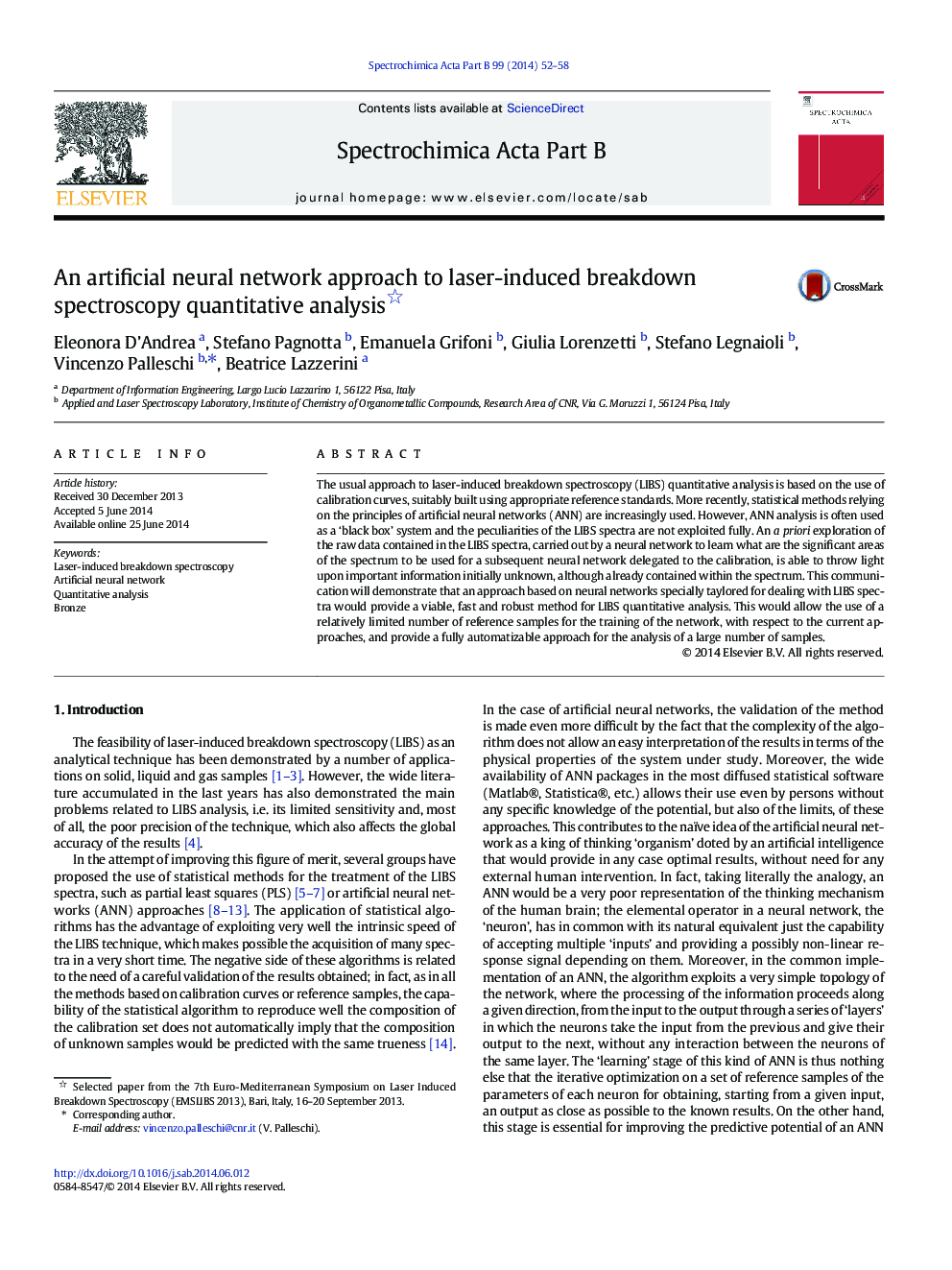| Article ID | Journal | Published Year | Pages | File Type |
|---|---|---|---|---|
| 7674698 | Spectrochimica Acta Part B: Atomic Spectroscopy | 2014 | 7 Pages |
Abstract
The usual approach to laser-induced breakdown spectroscopy (LIBS) quantitative analysis is based on the use of calibration curves, suitably built using appropriate reference standards. More recently, statistical methods relying on the principles of artificial neural networks (ANN) are increasingly used. However, ANN analysis is often used as a 'black box' system and the peculiarities of the LIBS spectra are not exploited fully. An a priori exploration of the raw data contained in the LIBS spectra, carried out by a neural network to learn what are the significant areas of the spectrum to be used for a subsequent neural network delegated to the calibration, is able to throw light upon important information initially unknown, although already contained within the spectrum. This communication will demonstrate that an approach based on neural networks specially taylored for dealing with LIBS spectra would provide a viable, fast and robust method for LIBS quantitative analysis. This would allow the use of a relatively limited number of reference samples for the training of the network, with respect to the current approaches, and provide a fully automatizable approach for the analysis of a large number of samples.
Related Topics
Physical Sciences and Engineering
Chemistry
Analytical Chemistry
Authors
Eleonora D'Andrea, Stefano Pagnotta, Emanuela Grifoni, Giulia Lorenzetti, Stefano Legnaioli, Vincenzo Palleschi, Beatrice Lazzerini,
